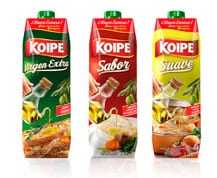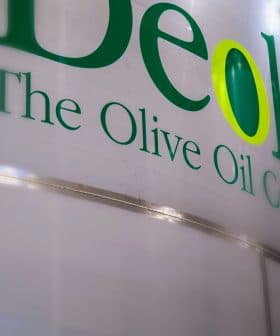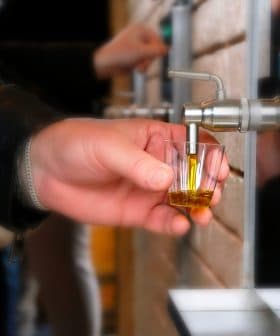Why Deoleo Chose 'Tetra Prisma' Packaging for its Koipe Brand
Deoleo’s Koipe brand is introducing olive oil in Tetra Prisma® packs, which offer benefits such as blocking light and air but may face consumer preference for transparent packaging. Tetra Prisma packs are praised for their ease of use, storage, and preservation of oil, but some consumers still prefer traditional glass bottles for olive oil.
Deoleo’s Koipe brand will soon be the latest to offer an olive oil product in a Tetra Prisma® pack.
Already popular for milk and fruit juices and even used for some wines, one of their benefits for olive oil packaging is also one of their drawbacks – they’re not transparent.

An alternative to the traditional tins and now more common glass and plastic bottles, Tetra Pak says consumers like the cartons because they are easy to grip, open and pour and have an elegant appearance. Benefits for sellers are said to include that they allow high quality printing, and their 8‑sided shape helps them stand out on a shelf. Promoted as made of renewable materials and recyclable paperboard, they come in volumes of 125 – 1000ml.
Packs “block light, air”
Córdoba-based olive oil producer ArteOliva, which claims to have been a pioneer in using Tetra Brik and Tetra Prisma packs for olive oil, says it is the packaging “that better protects the nutritional and organoleptic characteristics of extra virgin olive oil on a daily basis,” for reasons including blocking the passage of light and air, which join heat in making olive oil deteriorate.
Now Koipe – along with the slogan “Así de fácil”, similar to “It’s that easy” in English – is readying to reveal a new image on Tetra Prisma packaging for its extra virgin, suave (light taste) and sabor (strong taste) olive oils. Aimed at “making life easier”, the redesign features Tetra Prisma packs because they are easier to use and store, have an anti-drip system, are resistant to knocks, and offer better preservation of the oil, the company website says.
Some people prefer to see their oil
But will consumers take to them? George Eliadis, managing director of the Union of Agricultural Cooperatives of Peza, on Crete, recently told Food Production Daily that his company has produced olive oil in cartons for ten years but finds glass bottles are still more popular. Customers say they prefer to be able to see the olive oil but cartons are cheaper, don’t break, aren’t heavy and keep oil fresher longer because light can’t get in, he said, adding that investment is needed to help shift the market to such packaging.
Adapt packaging to consumer perception and tradition
Leandro Ravetti, technical director at Boundary Bend Ltd,. Australia’s largest olive oil producer and marketer, recently stressed the importance of choosing packaging according to how fast or slow product rotation is likely to be, and consumer perception and tradition. In his presentation at last month’s New York International Olive Oil Competition, Ravetti shared an example of clear glass outselling green glass 20 to 1 in his native Argentina twenty years ago – because consumers wanted to see what they were buying – while today in Australia it’s the opposite because there is more awareness of light degrading olive oil. As another example of responding to feedback, consumers had said they didn’t like how the oil ran over the label so Boundary Bend searched until it found a better pourer, he said.
When it comes to tin packaging, “not all tins are equal” and better tins naturally cost more. The density of tin plates, and the uniformity, varies, and any thinner parts will be where rusting could start. With plastic bottles, oxygen penetration through container walls also varies – high permeability is linked to undesirable increases in an olive oil’s peroxide value, meaning shorter shelf life – though some containers come with oxygen scavengers or physical barriers, such as a film. “The packaging material can have a significant impact on the quality of the oil,” Ravetti said.








